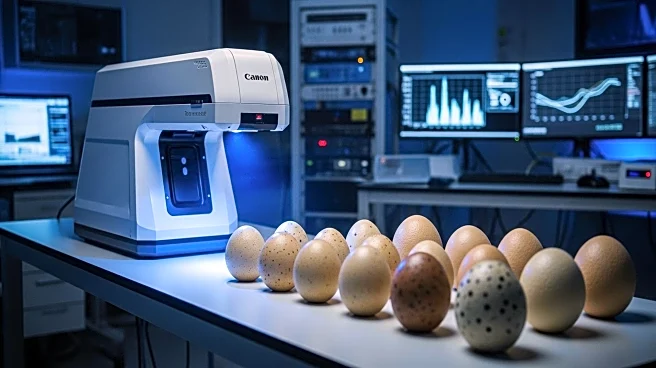What is the story about?
What's Happening?
Researchers in China have employed a micro-laser technique to date dinosaur eggs directly for the first time. By vaporizing portions of eggshells, they released radioactive uranium atoms, allowing them to measure the ratio of uranium to lead and ascertain the eggs' age. This method, known as U-Pb dating, provided a precise age of around 85 million years, coinciding with the Upper Cretaceous period. The eggs were found in Qinglongshan, a site rich in dinosaur eggs, offering a unique view into the past.
Why It's Important?
This direct dating method reduces uncertainties associated with indirect dating techniques, providing a clearer timeline of the Upper Cretaceous period. The ability to date eggs directly enhances understanding of dinosaur evolution, extinction, and environmental changes during this era. It also offers insights into the diversity and abundance of dinosaur species, contributing to a more comprehensive picture of prehistoric life.
What's Next?
Researchers may continue to apply this laser dating technique to other fossilized eggs and remains, potentially uncovering new information about dinosaur species and their environments. This method could also be used to study climatic fluctuations and migrations during the Cretaceous period.
Beyond the Headlines
The findings highlight the importance of technological advancements in paleontology, allowing scientists to uncover hidden narratives about Earth's history. This research underscores the potential for fossils to reveal complex stories about prehistoric ecosystems and the creatures that inhabited them.
AI Generated Content
Do you find this article useful?














